Golden Guide: Hallucinogenic Plants
pages 31 to 40
.
Contents...1-10...11-20...21-30...31-40...41-50...51-60...61-70...71-80...81-90
91-100...101-110...111-120...121-130...131-140...141-150...151-156...Index
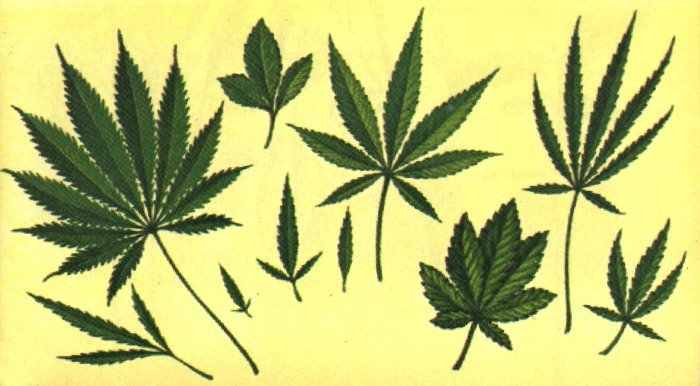
Cannabis leaves are palmately divided--normally into 3-7 leaflets
occasionally into 11-13. Leaflets vary in length from 2 to 6 inches.
CLASSIFICATION OF CANNABIS is disputed by botanists. They disagree about the family to which it belongs and also about the number of species. The plant is sometimes placed in the fig or mulberry family (Moraceae) or the nettle family (Urticaceae), but it is now usually separated, together with the hop plant (Humulus), into a distinct family: Cannabaceae.
It has been widely thought that there is one species, Cannabis sativa, which, partly as a result of selection by man, has developed many "races" or "varieties," for better fiber, for more oil content, or for stronger narcotic content. Selection for narcotic activity has been especially notable in such areas as India, where intoxicating properties have had religious significance.. Environment also has probably influenced this biologically changeable species, especially for fiber excellence and narcotic activity. Current research indicates that there may be other species: C. indica and C. ruderalis. All Cannabis is native to central Asia.
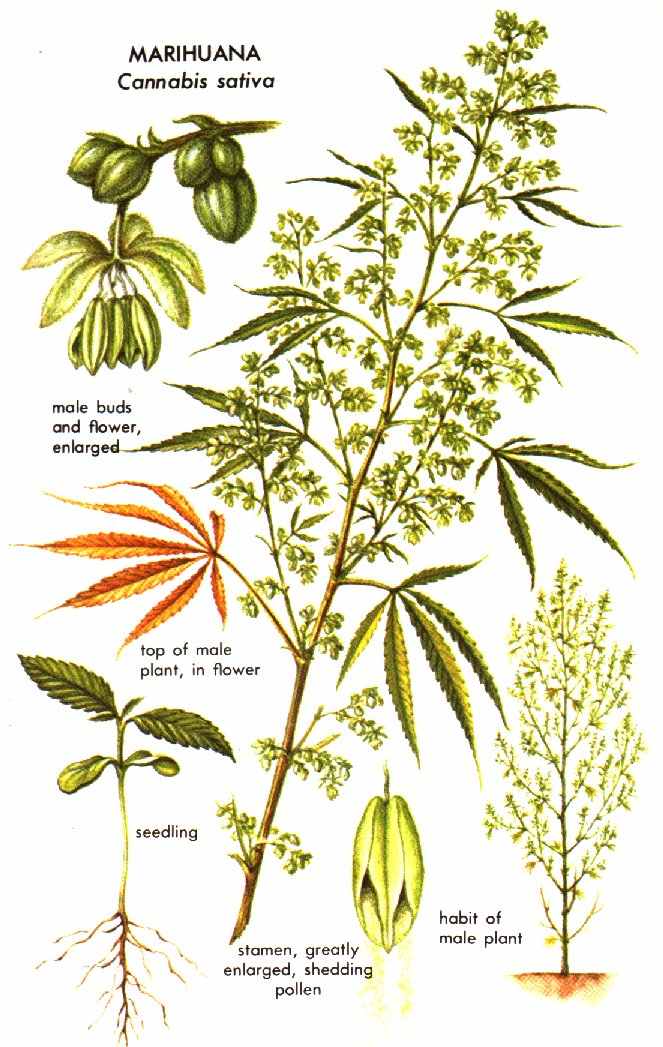
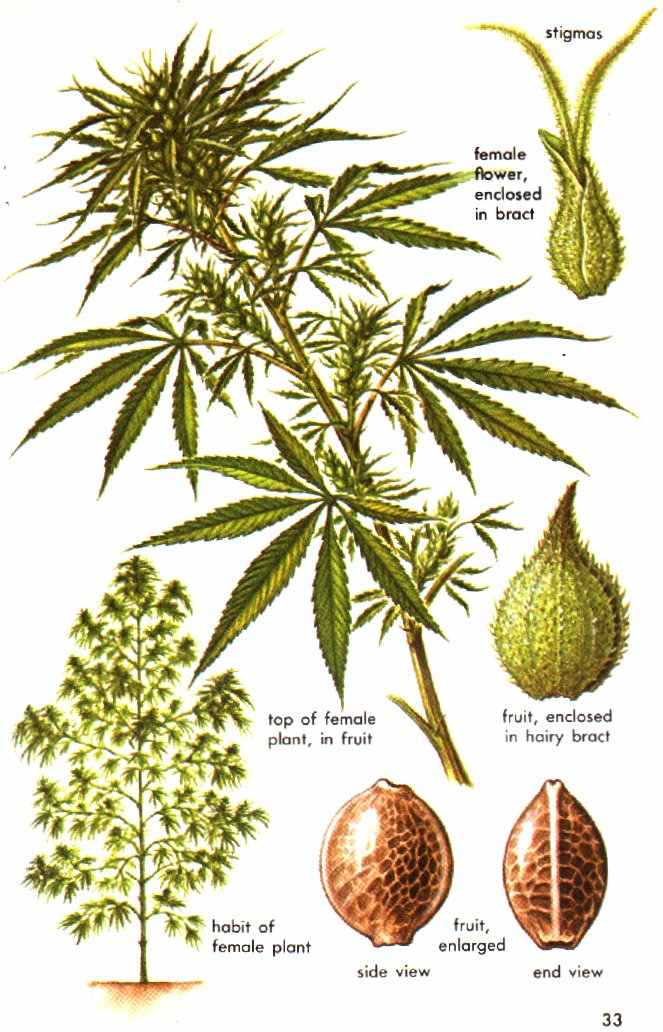
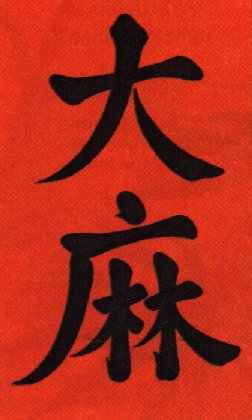
Chinese characters TA MA, the oldest known name for cannabis
TA (pronounced DA). Literally this means an adult man, and by extension may signify great or tall.
MA. It represents a fiber plant, literally a clump of plants, growing near a dwelling. Hence, the two symbols together mean "the tall fiber plant,'' which everywhere in China signifies cannabis.
HISTORY OF CANNABIS USE dates to ancient times. Hemp fabrics from the late 8th century B.C. have been found in Turkey. Specimens have turned up in an Egyptian site nearly 4,000 years of age. In ancient Thebes, the plant was made into a drink with opium-like effects. The Scythians, who threw cannabis seeds and leaves on hot stones in steam baths to produce an intoxicating smoke, grew the plant along the Volga 3,000 years ago.
Chinese tradition puts the use of the plant back 4,800 years. Indian medical writing, compiled before 1000 B.C., reports therapeutic uses of cannabis. That the early Hindus appreciated its intoxicating properties is attested by such names as "heavenly guide" and soother of grief. " The Chinese referred to cannabis as "liberator of sin" and "delight giver." The Greek physician Galen wrote, about A.D. 160, that general use of hemp in cakes produced narcotic effects. In 13th century Asia Minor, organized murderers, rewarded with hasheesh, were known as hashishins from which may come the term assassin in European languages.
Hemp as a source of fiber was introduced by the Pilgrims to New England and by the Spanish and Portuguese to their colonies in the New World.
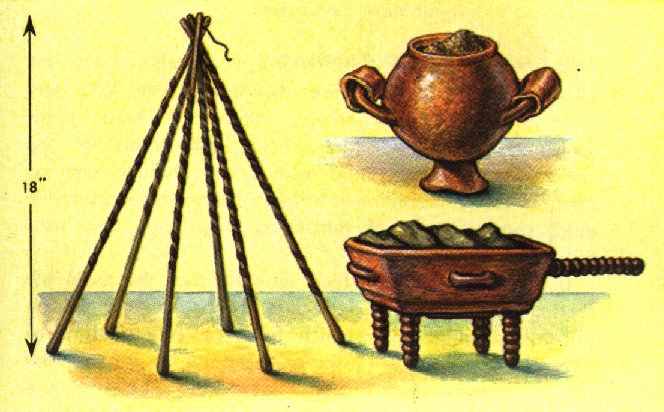
Objects connected with the use of cannabis were found in frozen tombs of the ancient Scythians, in the Altai Mountains and the border between Russia and Outer Mongolia. The small, tepee-like structure was covered with a felt or leather mat and stood over the copper censer (four-legged stool-like object). Carbonized hemp seeds were found nearby. The two-handled pot contained cannabis fruits. The Scythian custom of breathing cannabis fumes in the steam bath was mentioned about 500 B.C. by the Greek naturalist Herodotus.
THE MEDICINAL VALUE OF CANNABIS has been known for centuries. Its long history of use in folk medicine is significant, and it has been included more recently in Western pharmacopoeias. It was listed in the United Shtes Pharmacopoeia until the 1930's as valuable, especially in the treatment of hysteria. The progress made in modern research encourages the belief that so prolific a chemical factory as Cannabis may indeed offer potential for new medicines.
THE CHEMISTRY OF CANNABIS is complex. Many organic compounds have been isolated, some with narcotic properties and others without. A fresh plant yields mainly cannabidiolic acids, precursors of the tetrahydrocannabinols and related constituents, such as cannabinol, cannabidiol, tetrahydrocannabinol-carboxylic acid, stereoisomers of tetrahydroconnabinol, and cannabichromene.
It has been demonstrated recently that the main effects are attributable to delta -1- tetrahydrocannobinol. The tetrahydrocannabinols, which form an oily mixture of several isomers, are non-nitrogenous organic compounds derived from terpenes (see page 16). They are not alkaloids, although traces of alkaloids have been reported in the plant.
Until recently, little was known about the effects of pure tetrahydrocannabinol on man. Controlled studies are basic to any progress. These are now possible with the recent synthesis of the compound, a major advance in studying the mechanism of physiological activity of this intoxicant. Because the crude cannabis preparations normally used as a narcotic vary greatly in their chemical composition, any correlations of their biological activity would be relatively meaningless.
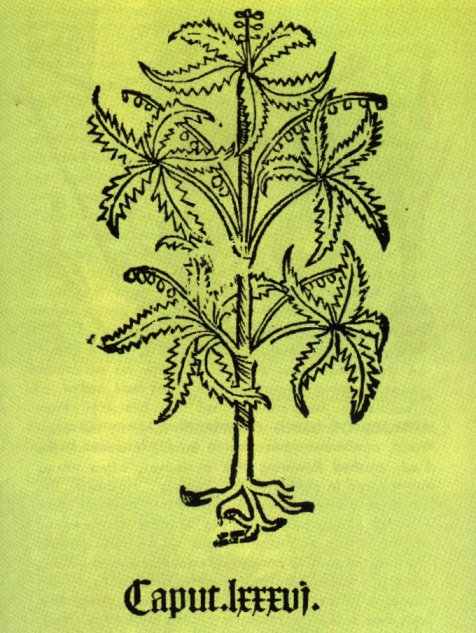
A crude woodcut illustration of cannabis from the 1517 edition of the European herbal Ortus sanitatis de herbis et plantis.
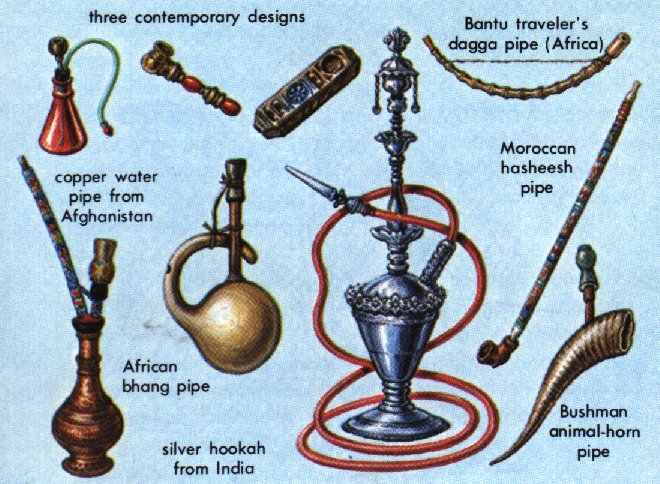
Assortment of cannabis pipes and water pipes.
METHODS OF USING CANNABIS vary. In the New World, marihuana (maconha in Brazil) is smoked--the dried, crushed flowering tips or leaves, often mixed with tobacco in cigarettes, or "reefers." Hasheesh, the resin from the female plant, is eaten or smoked, often in water pipes, by millions in Moslem countries of northern Africa and western Asia. In Afghanistan and Pakistan, the resin is commonly smoked. Asiatic Indians regularly employ three preparations narcotically: bhang consists of plants thst are gathered green, dried, and made into a drink with water or milk or into a candy (majun) with sugar and spices; charas, normally smoked or eaten with spices, is pure resin; ganjah, usually smoked with tobacco, consists of resin-rich dried tops from the female plant. Many of these unusually potent preparations may be derived from C. indica.
NARCOTIC USE OF CANNABIS has grown in popularity in the past 40 years as the plant has spread to nearly all parts of the globe. The narcotic use of cannabis in the United States dates from the 1920's and seems to have started in New Orleans and vicinity. Increase in the plant's use as an inebriant in Western countries, especially in urban centers, has led to major problems and dilemmas for European and American authorities. There is a sharp division of opinion as to whether the widespread narcotic use of cannabis is a vice that must be stamped out or is an innocuous habit that should be permitted legally. The subject is debated hotly, usually with limited knowledge. We do not yet have the medical, social, legal, and moral information on which to base a sound judgment. As one writer has said, the marihuana problem needs "more light and less heat." Controlled, scientifically valid experiments with cannabis, involving large numbers of individuals, have not as yet been made.
EFFECTS OF CANNABIS, even more than of other hallucinogens, are highly variable from person to person and from one plant strain to another. This variability comes mainly from the unstable character of some of the constituents. Over a period of time, for example, the inactive cannabidiolic acid converts to active tetrahydrocannabinols and eventually to inactive cannabinol, such chemical changes usually taking place more rapidly in tropical than in cooler climates. Material from plants of different ages may thus vary in narcotic effect. 
Contemporary American cannabis shoulder patches.
The principal narcotic effect is euphoria. The plant is sometimes not classified as hallucinogenic, and it is true that its characteristics are not typically psychotomimetic. Everything from a mild sense of ease and well-being to fantastic dreams and visual and auditory hallucinations are reported. Beautiful sights, wonderful music, and aberrations of sound often entrance the mind; bizarre adventures to fill a century take place in a matter of minutes.
Soon after taking the drug, a subject may find himself in a dreamy state of altered consciousness. Normal thought is interrupted, and ideas are sometimes plentiful though confused. A feeling of exaltation and inner joy may alternate, even dangerously, with feelings of depression, moodiness, uncontrollable fear of death, and panic. Perception of time is almost invariably altered. An exaggeration of sound, out of all relation to the real force of the sound emitted, may be accompanied by a curiously hypnotic sense of rhythm. Although the occasional vivid visual hallucinations may have sexual coloring, the often-reported aphrodisiac properties of the drug have not been substantiated.In many parts of Asia the use of cannabis preparations is both socially and legally acceptable. In predominantly Moslem countries, Cannabis is usually smoked in water pipes sometimes called hookahs. The illustration shows an Afghani using one of the many kinds of water pipes seen in Asia.


